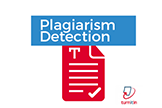APLIKASI RESERVOIR SATURATION TOOL(RST) LOG PADA CASED HOLE WELL UNTUK EVALUASI KANDUNGAN HIDROKARBON DI CEKUNGAN KUTAI, KALIMANTAN TIMUR
Abstract
Kondisi fisik sumur yang telah diproduksi sangat sulit untuk dipantau seperti tingkat saturasi fluida akibat dilapisi casing(cased hole). Kombinasi log Density dan Neutron Porosity saja kurang efektif untuk kondisi tersebut. Pengaruh dari cased hole mengurangi sensitivitas log Density dan Neutron Porosity. Reservoir Saturation Tool(RST) log merupakan cased hole log memanfaatkan pulsa neutron untuk pengukuran saturasi dan jenis fluida pada formasi. Log ini sangat efektif untuk evaluasi kandungan fluida setelah diproduksi. Hasil evaluasi tersebut digunakan untuk membedakan lapisan masih atau sudah tidak prospek hidrokarbon. Log ini memanfaatkan log sigma untuk evaluasi fase fluida, carbon oxygen Ratio(COR) untuk evaluasi unsur utama fluida terutama rasio karbon terhadap oksigen, dan log saturasi untuk mengidentifikasi persentase lapisan produktif. Umumnya log RST dilakukan di zona-zona produktif. Hasil interpretasi data log di Cekungan Kutai menunjukkan bahwa terdapat indikasi hidrokarbon di kedalaman 3760 - 3765 feet berupa Gas dan minyak telah berkurang hingga 30% setelah diproduksi dan pada kedalaman 3766-3790 feet masih terdapat kandungan minyak sekitar 25% dan gas sekitar 10% dari total kandungan sebelum diproduksi.
Katakunci : Cased Hole, Reservoir Saturation Tool(RST) log, Neutron, Sigma log, Carbon Oxygen Ratio Log
Produced well’s physical properties like fluid saturation is hard to monitored because it has been cased. Combination of density and neutron porosity log isn’t effective in this situation. Effect of casing in a well reduces density and neutron porosity log sensitivity. RST log is a cased hole log using neutron pulse to measure fluid saturation and phase of formation. It is effective for evaluating fluid content of produced well. Evaluation result are used to differentiate prospect or non-prospect hydrocarbon layer after produced. It’s utilize sigma log for evaluating fluid phase, carbon oxygen ratio(COR) for evaluating fluid main content, and saturation log to identify percentage of productive layer. Generally RST log is ran in productive zone. Interpretation result in Kutai Basin showing hydrocarbon indication in depth 3760 – 3765 feet as gas and depleted oil till 30% before, in depth 3766 – 3790 feet around 25 % oil and around 10% gas of total content before produced.
Full Text:
PDF (Bahasa Indonesia)DOI: https://doi.org/10.17509/wafi.v3i2.12865
Refbacks
- There are currently no refbacks.
Copyright (c) 2018 Wahana Fisika

This work is licensed under a Creative Commons Attribution-ShareAlike 4.0 International License.
Wahana Fisika e-ISSN : 2549-1989 (SK no. 0005.25491989/JI.3.1/SK.ISSN/2017.02 ) published by Physics Program , Universitas Pendidikan Indonesia Jl. Dr.Setiabudhi 229 Bandung. The journal is indexed by DOAJ (Directory of Open Access Journal) SINTA and Google Scholar. Contact: Here
 Lisensi : Creative Commons Attribution-ShareAlike 4.0 International License.
Lisensi : Creative Commons Attribution-ShareAlike 4.0 International License.






